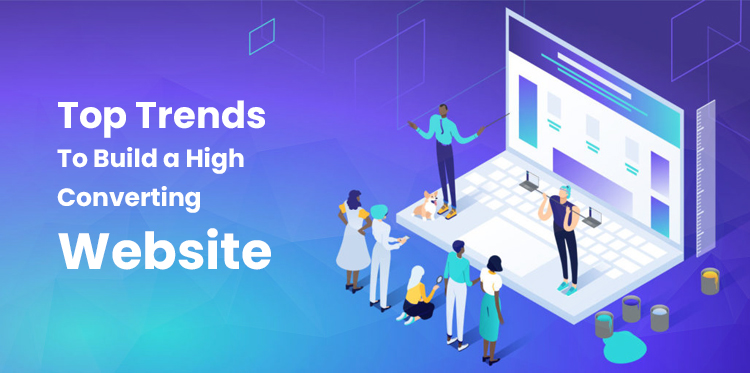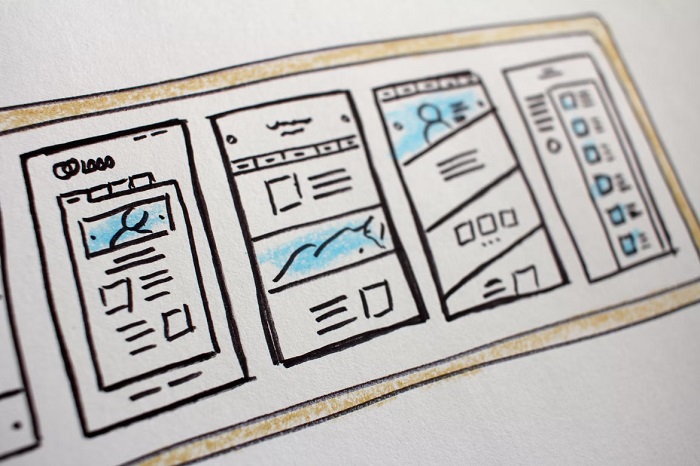To build a high-converting website is not rocket science. But still, an effective website is not just a beautiful picture with a description of a product or service, and often there is a lot of painstaking work behind the final result.
Table of Contents
A company website can make a decisive contribution to the commercial success of a product/service or even an entire brand. But here it is important to know what strategies to follow when creating it.
To save you from annoying mistakes, we will tell you what you should pay attention to when creating a website, and what you absolutely cannot do. Following these recommendations, you will get a website that will do its job properly – attract traffic and customers.
7 aspects to focus on To Build a High-Converting Website

1. Frontend and backend
When it comes to website design, there are three main aspects to consider, without which the user will simply leave your site:
- Mobile version or easy adaptation for smartphones
- Loading time
- Reliability
First of all, your website should run just as easily on mobile phones as it does on a standard laptop. As a rule, most of the search queries come from mobile devices.
Therefore, it is reasonable to assume that the majority of your website visitors use smartphones, which you can check with a web analytics tool.
Load time is also crucial for Internet users, who are by the way very impatient these days. How important is loading time? According to renowned marketer Neil Patel, 40% of people leave a website that takes more than 3 seconds to load. There is something to work on, right?
Reliability is the last but not the least factor for website conversion. If users face errors or breaks in the work of the website, you can face a lower conversion rate. Protect your website and make sure it’s available to everyone.
2. Simple and clear navigation
Too much text, endless pictures, long registration forms – all this overloads site visitors. In a world where hundreds of resources are fighting for a user’s attention every day, no one will wade through vague text to understand what you wanted to say.
The purpose of the site is to simplify the process and lead the visitor to the conversion in the shortest possible way. Therefore, you should keep the page as simple as possible so that visitors know what to do.
3. Calls to action
In general, the presence of a call to action in itself doesn’t guarantee the success of the site. It should be clear and understandable, the wording should push the user to action. “Submit” doesn’t look attractive. But “Get a free consultation” will give more conversions. The word “free” is an obvious motivator to action.
Note that calls to action should always be clear and relevant. Clarity and relevance help ensure that visitors don’t get confused when navigating your site.
4. SEO optimization
SEO consists of several components, both external and internal. Off-page SEO entails actions that take place outside your website, such as obtaining backlinks and sharing your site’s content on social media. On-page SEO audit include stuff like employing relevant keywords, building and uploading XML sitemaps to Google, and using easy-to-read page URLs.
SEO is a very complex topic, but it’s definitely worth mastering.
5. Media
Adding media to some web pages often helps improve your conversion rate. A key example is product pages, where there should be high-quality images so that potential customers know what they will be buying.
Make things even better – add short videos that clearly show the product from all sides. High-quality video content is quite expensive, but examples of high-converting pages speak to the justification for using this strategy. Well, to cut costs, create videos yourself, but do not overdo it with color correction.
6. Trust block
Any buyer needs to form not only a need and desire, but also trust in a product or company. Trust blocks contain all the information that contributes to this: reviews, cases, examples of work, letters of thanks – place everything that will help you to be convinced of the professionalism and quality service. But do not lie, purchased reviews have not worked for a long time and are easy to read.
7. Lead form
With regard to the conversion form, you need to follow a few rules to achieve maximum efficiency. First, no extra fields. Visitors are intimidated by long forms, so leave only the fields necessary to continue communication with the user. In the form, it is better to leave the fields to fill in only the name and email.
Secondly, it is necessary that the form be bright, stand out, draw attention to itself. Check the best practices to understand how to do that.
Wrap up
When creating a site, attention should be paid to the structure and logic. Web design can be simple, but if all the logic is followed, then the site will work and bring high conversion.
Here is the final checklist for increasing conversions:
- Design: Getting to the site, the first thing a visitor sees is its design. Therefore, it is worth working on the attractiveness of the design.
- Content: The materials published on the site must be unique, meaningful, and, most importantly, useful to the user.
- Usability: The visitor should not experience difficulties in using the resource, so the main requirement for usability is convenience.
The main thing to convince the users is to show that they have a reliable company, where they will not be deceived but will offer quality services.
The results of many opinion polls indicate that people are willing to pay more, but only if they are sure that they are buying products from a well-known brand or using the services of a reputable company. You can verify this with the help of the site.
Our article provides only the main answers to questions on how to increase conversion. Work on the site should be carried out constantly.
It is necessary to study statistical data, analyze the behavior of visitors, and test technical changes. The effort will pay off, and conversion rates will definitely go up over time.

